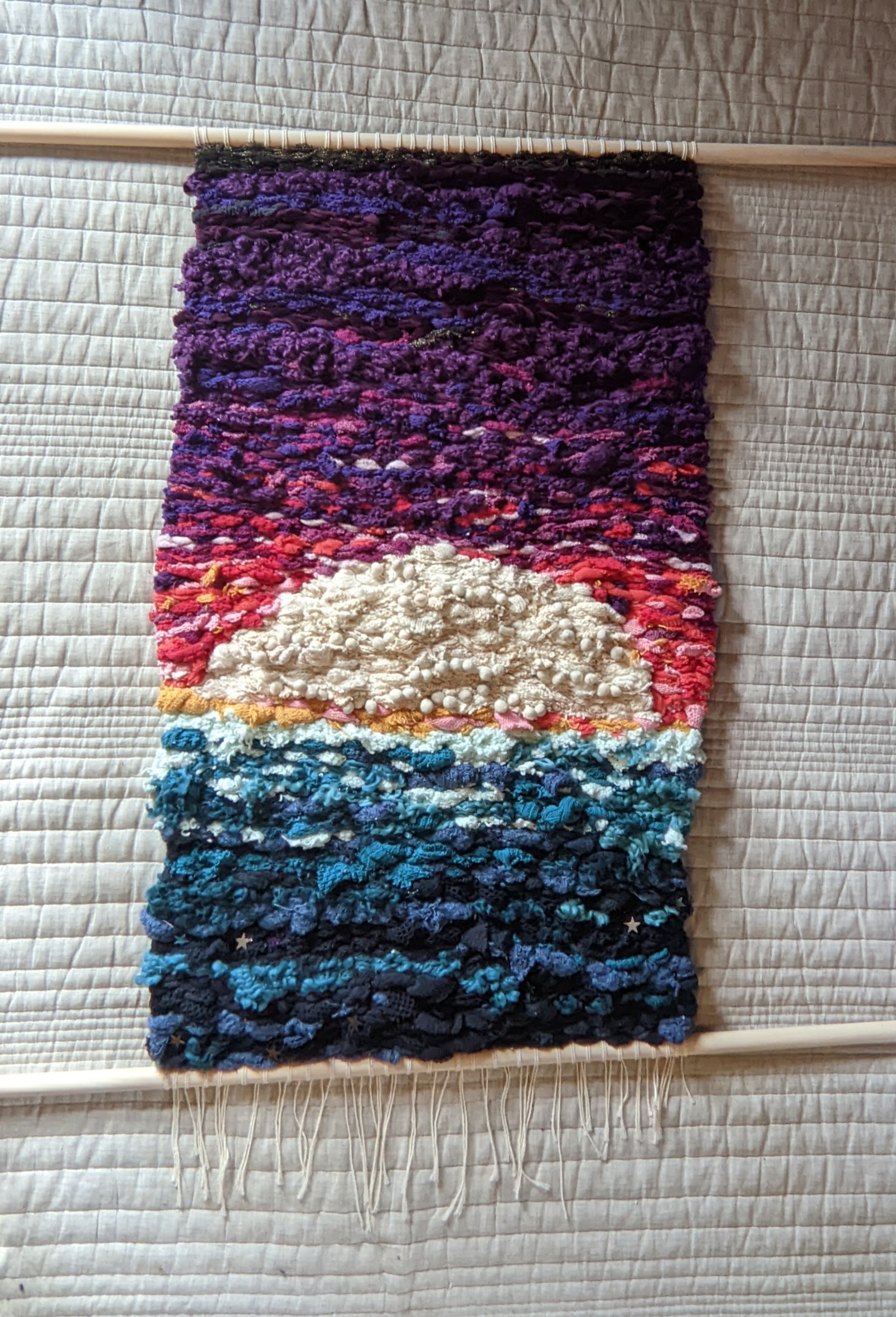Goodnight, Moon

I wanted to weave a tapestry. I have never used a loom or woven anything other than that one scarf I wove in middle school, and it involved taping a bunch of plastic drinking straws to my desk, threading cheap acrylic yarn through each straw, then weaving more yarn over under over under each straw until I had a very loosely woven scarf.
A poor primer, but a primer none the less.
I had a bit of a vision in my head, of a moon setting over the ocean. Or maybe rising. Let's not get lost in the details. I also really didn't want to buy new weaving materials - I wanted to harvest a bunch of garments from thrift shops and use that as the weaving textile.
I built the loom on December 22 and finished the weaving on December 31 - it's very likely that if I hadn't done most of this work over the winter holiday, it would have taken longer.
Materials
- (2) 3' x 1“ wooden dowels
- ~62yds 3mm cotton macrame cord 1)
- additional rope plus hardware to mount upper dowels from ceiling
- additional rope plus weights to stabilize lower dowels
- assorted knit garments
Process
The Loom
I knew I wanted to suspend the loom from the ceiling so I could have it serve as a somewhat permanent fixture while I worked on it when I had time. I also knew I had no idea how to use or build a loom - I only knew the very basics of weaving. This entire process was an exercise in taking a base understanding of something, researching it, then deciding I just needed to make up my own process to get the results I wanted.
The loom was strung up in such a way that I could change the distance of the whole thing to the floor, letting me move from kneeling to sitting to standing positions as my body started protesting. This let me work longer and more comfortably than I likely would have otherwise.
The Textiles
I had two factors I was going for in garment selection - color and texture. I knew I wanted this to be a tapestry that had a *lot* of variation going on with the texture, so I was very attracted to woven garments that differed in weaving styles from one to another, or that had interesting patterns or textures incorporated in them. Notably, one white sweater that became part of the moon was covered in tiny white pom poms attached to 1/2” cotton tape. That tape was entirely cut away then woven intermittently through the moon's surface.
I washed all my garments before working with them, then ripped or cut them into strips of various widths and lengths and sorted them into the rough color groups - blues for the ocean, white for the moon, and pinks and yellow for the sky. I would eventually go back to the thrift shops for more sweaters because I ran out of material and also wanted a darker sky than the colors I had.
Finishing
This is by no means a well-finished 2) tapestry. All of the tails of each textile strip were left hanging in the back as I finished individual rows and sections These tails were simply trimmed down to a 2-3“ length when I finished the loom. I am mostly relying on pressure to keep the whole thing from unraveling - if you were to remove either the top or bottom dowel, or give it lots of vigorous shaking, there are a few good chunks that would likely fall out.
I left the lower tails of the warp hanging because I liked how they looked. The tapestry stayed on the dowels, which then went from being the “loom” to just being the framing and hanging system.
